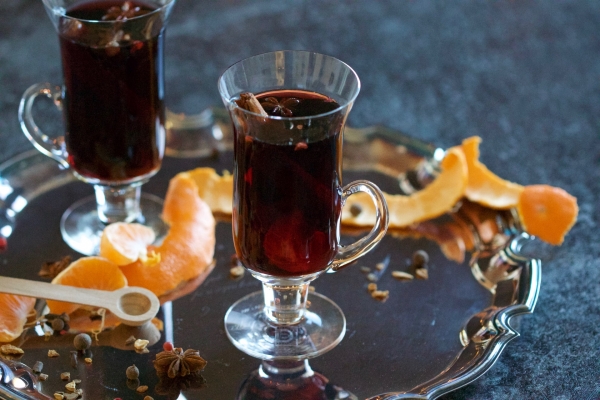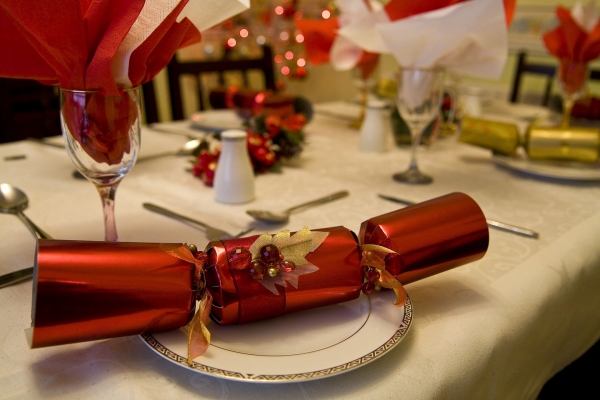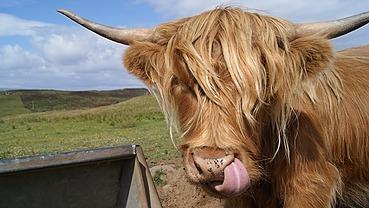Christmas Traditions in Scotland
20th December 2020
It’s that time of year! Decorating the tree, eating too much, exchanging gifts and most importantly spending time with our families. Here at Best Scottish Tours we love Christmas. However, from chatting to guests on our tours, we have realised that some of our traditions are a little different from our friends over in the US and Canada. So, we thought we’d tell you all about how we do Christmas in Scotland.
Looking to visit at Christmas time? Check out our 7 Day Best of Scotland in Winter Tour.
Christmas Crackers
When considering what to include in this blog, I thought it best to do some research on the differences between a US Christmas and a Scottish one. My biggest shock? That many American’s don’t have Christmas Crackers! Could this be true? I checked with an American friend and indeed, she didn’t discover Christmas Crackers until she moved to Scotland. You are missing out on such fun!
Christmas Crackers are cardboard tubes covered in decorative paper which is twisted and tied at each end to form two handles for pulling. At Christmas dinner a cracker is placed at each setting. Once everyone is seated, each person offers one end of their cracker to their neighbour. Both then pull as hard as they can until the cracker snaps in two. Inside the cracker there is a strip of paper with a tiny amount of gunpowder on it, so when the cracker is pulled apart there is a satisfying SNAP! The person left with the main part of the cracker wins the contents - normally a toy or trinket, a cheesy joke to be read out to the table and a colourful paper hat. Everyone wears these paper hats throughout the meal.

Christmas Cracker - Al Lambe on Pixabay
The cracker was invented in 1861 by Tom Smith who ran a candy shop in London. He was inspired by the design of the festive French 'bon bon’ - an almond candy wrapped in twists of tissue paper. He placed small love notes inside the tissue paper and his Christmas sales of bon bons rocketed. One night, Smith threw a log on his fire at home and it cracked loudly, inspiring him once again to improve on his festive offering. He created a cardboard strip hidden within the twists of tissue paper that exploded with a crack when two people pulled the sweetie wrapper apart.
Food
Of course, we eat turkey with all the trimmings on Christmas Day (and usually for a few days after) but in the run up to Christmas many mince pies are consumed. These may sound savoury but the mincemeat is actually made from sugar, dried fruit, spices, brandy and ‘suet’ (animal fat). Personally, I think they are delicious!
On the other hand… I’m not such a fan of Christmas pudding - a heavy fruitcake soaked in spices and brandy that is made months in advance and stored in a cupboard till Christmas Day. When it is ready to serve, we cover it in even more brandy which is then set on fire drawing appreciative gasps from the diners. Traditionally, a coin is hidden in the pudding and it is said to be good luck if you find it, just make sure you don’t bite too hard. Fortunately for me other desserts are usually available.
Drink
No Eggnog! While you can get it here, it is pretty uncommon… I think the name makes most Scots a bit suspicious of the iconic American Christmas drink. A nation that likes to drink its whisky neat are slow to order a drink containing raw egg! Instead we drink mulled wine – hot, spiced, heavy red wine with a stick of cinnamon and a slice of orange. An alternative to this is mulled cider which I like even better. Perfect for keeping you feeling warm and fuzzy on those cold winter nights.

Mulled Wine - Gaby Dyson on Unsplash
Hogmanay
New Year in Scotland is a huge celebration, more-so than in the rest of the UK. We have our very own name for it - ‘Hogmanay’. The biggest celebration in Scotland takes place in Edinburgh at the annual Hogmanay Street Party. A large part of the city centre is fenced off and several stages are placed along Princess Street. On the night, a variety of mostly Scottish bands play for thousands of party revellers. At midnight, a cannon is fired from Edinburgh Castle and a wonderful fireworks display erupts into the sky. It is a brilliant night out and if you happen to be visiting Scotland over Hogmanay I’d really recommend getting tickets (but book them well in advance!). At the end of the night we all sing Auld Lang Syne - a beautiful Robert Burns song and iconic international anthem, take a listen here.
There are many other Hogmanay celebrations across Scotland - notable ones include the celebration at Stirling Castle and the Stonehaven Fireballs. Stonehaven is a small town in Aberdeenshire and every year just before midnight, bagpipers lead a procession of people swinging fireballs above their head. There is also lots of other music and entertainment and the event is free, although you need to get there early to secure a good spot to watch the show.

Edinburgh Hogmanay - Alana Harris on Unsplash
Superstitious Scots
Another Hogmanay tradition is “first footing” The first guest to enter your home after midnight is your “first foot”. To ensure that the year ahead brings good fortune, your ‘first foot’ should be a male with dark hair. He is expected to bring a traditional Scottish gift such as whisky, shortbread or some coal for the fire. It is said that this tradition comes from a time when the Vikings were raiding parts of Scotland. Most Scandinavians were fair haired… so a blonde man was a bad sign!
Like many we hang mistletoe from the ceilings and doorways, but we Scots aren’t hoping for a Christmas kiss… we do it to keep away the evil spirits. Some families also keep the fire burning all through Christmas for the same reason.
A less ominous tradition is the burning of Rowan tree branches at Christmas time. As the tree branches are consumed by the fire, so are any quarrels and bad feeling between family and friends. It allows us to start the new year with a fresh mindset and good relationships.

Mistletoe Berries - Hans Braxmeier on Pixabay
Pantomime
‘He’s over there!!!’ the children scream as the baddie hides behind the hero prince. It can only be the pantomime! In theatres throughout the country these traditional Christmas shows are hugely popular with children and adults alike. They are full of song, dance, laughter and ‘scary' bits. Great liberties are taken with fairytales such as Aladdin, Snow White and Cinderella which, if truth be told, are portrayed in a fairly eccentric manner. It is traditional to have a female lead and a man in drag - the ‘dame’ – to play an exaggerated and comic female part such as an ugly sister.
The best part about the Pantomime is that the audience is involved throughout. There are no stuffy silences or ‘shhhh’-ing at these these shows. Raucous laughter is encouraged, and the dame will usually engage directly with the audience. My favourite part? It’s where the performers throw sweets into the audience (with the aid of a tennis racket of course). This photo from the Tron Theatre's 2019 show captures the atmosphere of the Pantomime perfectly. It is a delightful, if completely mad experience.

Cinderfella at the Tron Theatre, Glasgow - John Johnston
Boxing Day Sales
Oh the hysteria of the Boxing Day sales. The day after Christmas is a public holiday and it is known in Scotland as Boxing Day. In years gone by it was the day when tradesmen and servants were given Christmas boxes or gifts by their employers - hence ‘Boxing Day’. In modern times, it is the day the shops re-open and slash their prices meaning thousands of Scots pile into the city centres to find all the best deals.
Many arrive to queue before the shops have even opened. It is not for the faint of heart; stamina is required, tempers flare and feet are sore. Personally, I prefer to spend the day curled up on the couch recovering from all the over-eating and drinking the day before and getting ready for another family get together.
The Queen’s Christmas Message
For millions of people the most iconic part of Christmas day is watching the television broadcast of our head of state, Queen Elizabeth, delivering her annual Christmas Day message. This is a long-held tradition, where she reflects on the year we have had and discusses her hopes for the year ahead. It is an address to all of the Commonwealth countries, so the speech, officially known as Her Majesty's Most Gracious Speech, is also broadcast in countries such as Australia, Canada and New Zealand.
It is only a few more sleeps till old Father Christmas comes sliding down our chimneys with a big bag of presents. Time to look out carrots for the reindeer and make sure you have a glass of warm milk and some cookies by the fireplace. From bonnie Scotland, Merry Christmas everyone!
Recent articles



